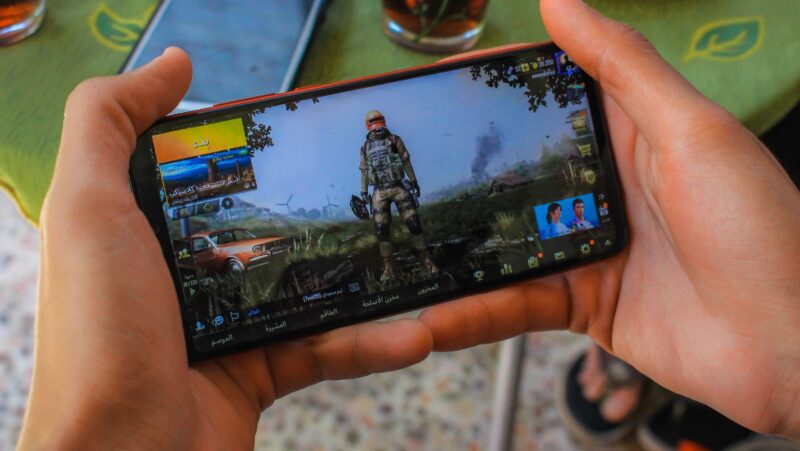
Back in the day, we relied on physical gaming mediums in order to fully enjoy a video game. Discs, memory cards, and hefty consoles were needed in order to play a game. That all changed when the internet was maximized from a gaming standpoint. The introduction of Cloud technology has allowed users to save everything online. This feature gave users the ability to continue their work without having to save a copy on a physical storage device. This technology was then used in the gaming ecosystem. Now, games can be saved online, allowing gamers to play games and continue their progress from where they left off. Continuing your playthrough can now be as easy as converting ADA to USD or fetching yourself a cup of coffee.
With the introduction of Blockchain technology, more and more features are being implemented into Cloud gaming. Let us now take a deeper look at how Blockchain has improved Cloud gaming moving forward.
7 Ways Cloud Gaming Has Benefitted From Blockchain Technology
Cloud gaming requires players to be online in order for them to play the game and save their progress. This requirement has its pros, but it also can have some cons that malicious entities can exploit. This is where Blockchain technology entered the conversation and has improved Cloud gaming as a whole. Aside from security and privacy features, let us now take a look at how Blockchain has impacted Cloud gaming.
1. Enhanced Security and Data Ownership
Cloud gaming has benefitted from Blockchain technology’s enhanced security and data ownership features. Conventional Cloud gaming platforms rely on a central system. This factor can lead to security threats and possible technical problems. With Blockchain’s decentralized nature, game saves can now be registered in multiple nodes. This allows the game saves to be accessed better and is more secure from potential attacks.
Additionally, Blockchain enables players to have true ownership of in-game assets. Unlike gaming models from the past, blockchain-based assets are stored on immutable ledgers. This means players can securely trade, sell, or transfer their assets across different platforms without relying on a centralized authority.
2. Decentralized Gaming Infrastructure
Large-scale data centers owned by corporations have traditionally powered cloud gaming. However, Blockchain enables a decentralized infrastructure where computing power is shared among users instead of being controlled by a single entity. This shift reduces the operational costs of cloud gaming while making the service more scalable and accessible worldwide.
Projects like decentralized cloud computing allow users to contribute unused processing power in exchange for rewards, creating a more distributed and resilient gaming network. This model not only cuts costs for gaming providers but also allows users to participate in the gaming economy in ways that were previously impossible.
3. Play-to-Earn and Economic Models
Blockchain has procured a new way for players to earn during cloud gaming through the play-to-earn model. In the past, gaming platforms only allowed the purchase of games or in-game items. However, blockchain-based games enable players to earn cryptocurrency or NFTs as they progress through the game. This feature lets players receive an added layer of actual rewards that have real-world value.

Cloud gaming platforms integrated with Blockchain further enhance this experience by enabling seamless transactions. Instead of relying on a centralized game store, smart contracts facilitate automatic payments, rewards, and trades between players, ensuring a transparent and fair marketplace.
4. Cross-platform Compatibility and Interoperability
One of the key limitations of traditional cloud gaming is the lack of interoperability between different platforms. A game’s assets and progress are usually locked to a specific company’s ecosystem. Blockchain solves this by allowing true cross-platform compatibility, where game progress, achievements, and digital assets can be accessed across multiple cloud gaming services.
A great example is when a player earns an NFT-based weapon in a different title and can use it in another game that supports the same blockchain network. This interoperability creates a more dynamic and interconnected gaming landscape where players are no longer restricted to a single platform.
5. Transparency and Fairness in Gaming
Blockchain introduces an unprecedented level of transparency in cloud gaming. Many online games suffer from unfair matchmaking, pay-to-win mechanics, or hidden algorithms that manipulate gameplay. By using blockchain-based smart contracts, cloud gaming platforms can implement fair and auditable gaming mechanics.
For example, blockchain-based leaderboards and rewards systems ensure that all players are treated equally and there is no manipulation of outcomes. Moreover, the decentralized verification of in-game actions prevents cheating, providing a more balanced and enjoyable gaming experience.
6. Improved Game Streaming and Content Delivery
Another way Blockchain is transforming cloud gaming is through improved content delivery networks (CDNs). Traditional cloud gaming requires robust CDNs to minimize latency and optimize streaming quality. Blockchain-based CDNs use distributed networks that allow gamers to stream content more efficiently by pulling data from the closest and most optimized node.
This decentralized approach reduces lag and buffering issues, ensuring a smoother gaming experience, especially in regions with limited access to high-end data centers. It also helps lower bandwidth costs for developers and publishers, making cloud gaming more financially viable.
7. NFTs and Digital Collectibles in Cloud Gaming
Non-fungible tokens (NFTs) have gained significant traction in gaming, allowing players to own unique digital collectibles. Cloud gaming platforms integrating Blockchain can provide users with NFT-based rewards, skins, and other digital assets that hold real-world value.
Unlike traditional gaming items that lose their value when a game shuts down, blockchain-based NFTs exist independently of any one game.

This ensures that digital assets remain valuable and usable across multiple gaming ecosystems, providing long-term utility to players.
Challenges and Future Prospects
While Blockchain has significantly improved cloud gaming, some challenges still need to be addressed. Scalability remains a concern, as blockchain networks can experience congestion, leading to slower transaction speeds. Moreover, widespread adoption requires seamless integration between cloud gaming services and blockchain platforms.
Despite these challenges, the future of blockchain-powered cloud gaming looks promising. As technology advances, more gaming companies are exploring blockchain-based solutions to enhance security, fairness, and economic opportunities for players. The continued development of layer-2 scaling solutions, decentralized networks, and improved blockchain protocols will further cement Blockchain’s role in the evolution of cloud gaming.
Conclusion
Blockchain technology has played a pivotal role in reshaping cloud gaming, offering enhanced security, decentralized infrastructure, new economic models, and greater transparency. By leveraging Blockchain, cloud gaming is becoming more accessible, rewarding, and immersive for players worldwide. As the industry continues to evolve, the synergy between blockchain and cloud gaming will unlock even more innovations, creating a future where gaming is not only more secure and fair but also truly decentralized.










